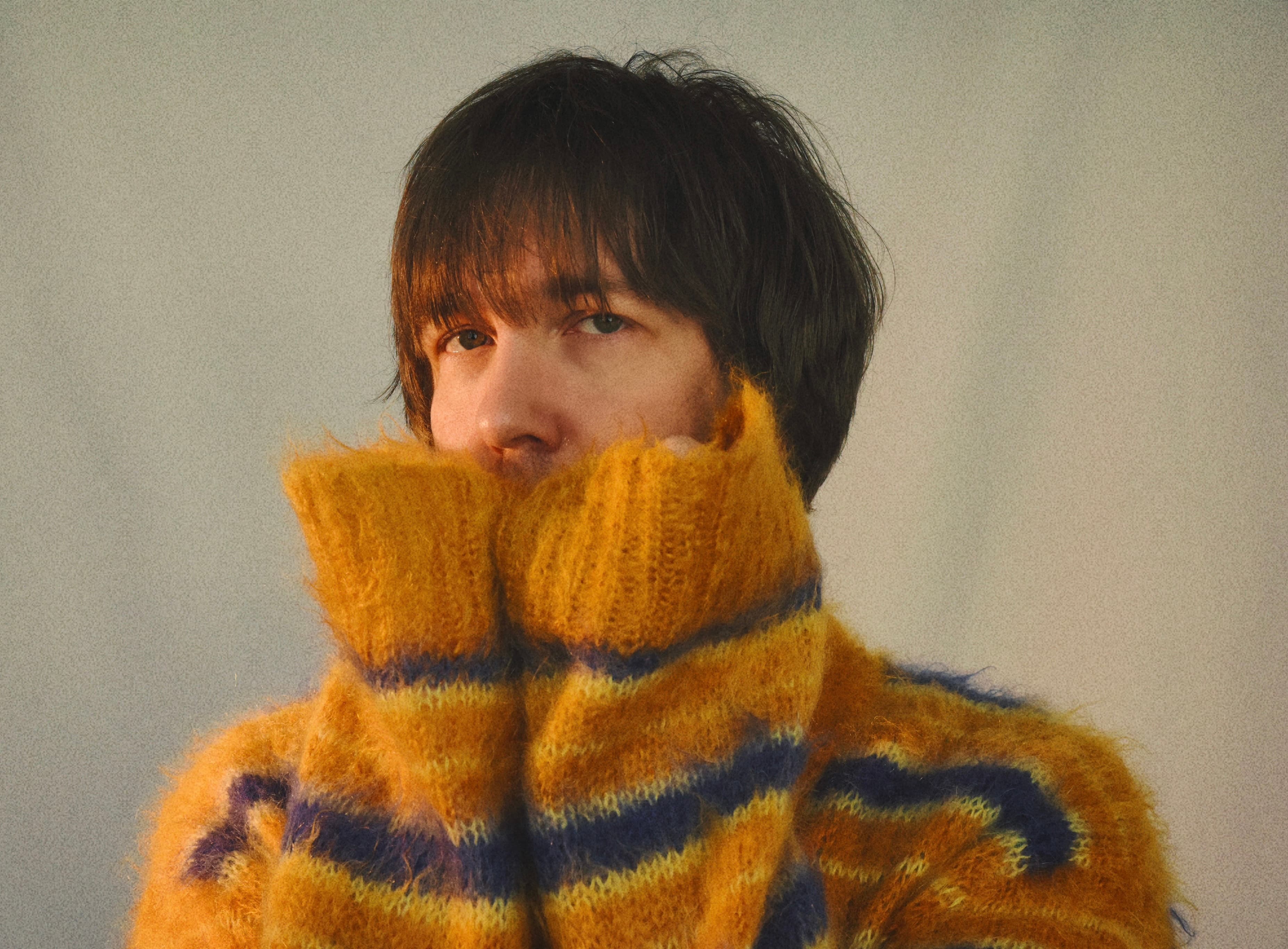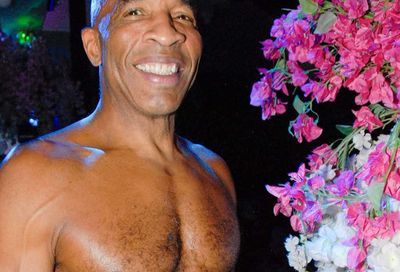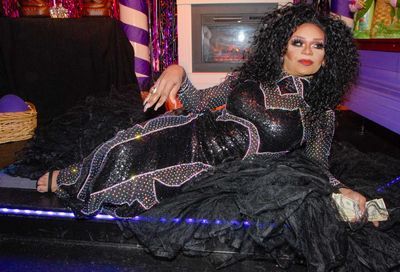Prince: Ranking His Albums, Bottom to Top
 8. Around the World in a Day (1985)
8. Around the World in a Day (1985)
Prince’s made it clear in his follow-up to Purple Rain that he had no interest in repeating himself or staying within clearly defined boundaries. Around the World in a Day was released less than three months after the final Purple Rain single, “Take Me With U.” Initially there was little promotion for the new album, but went straight to #1 anyway. Prince had decided he wanted to allow the album to be experienced in its entirety so no single or video preceded it; the first single, the sly and witty “Raspberry Beret,” wasn’t issued until the album had been in stores for a month. Yet again, Prince showed that he would do things his way and only his way, and not follow the rules laid out by record industry norms. Around the World in a Day is a colorful, psychedelic album that covers a wide range of stylistic territory. The incisive “Pop Life” was another Top 10, but third single, the sizzling blast of funk “America,” just missed the Top 40. It’s odd that “Paisley Park,” easily one of the more commercial songs on the album, was released in Europe as a single but not in the U.S. In any event, Around the World in a Day was still a success, it showed increasing influence by his Revolution band-members, and it put Prince in the category of a rock chameleon in the tradition of David Bowie who had the freedom to pursue whatever direction he wanted, and the talent to pull it off (.. usually).
 7. The Gold Experience (1995)
7. The Gold Experience (1995)
The most productive period after Prince’s ‘80s creative and commercial apex came in the very midst of the worst days of his bitter feud with Warner Bros. It was an ugly back and forth between artist and label, which eventually led Prince to scrawl “slave” on his face, and to change his name to an unpronounceable symbol in an ill-fated attempt to bypass his contract. Now 20 years after the fact, with the recent announcement of a new deal between Prince and Warner Bros. that hands ownership of his master recordings to the artist, it seems Prince finally won the war. But the battles of the ‘90s left him scarred commercially — “The Artist Formerly Known as Prince” became a punchline for late-night comics. A shame, because his bold 1995 album The Gold Experience has everything that made Prince great in the first place, and first and foremost it’s fantastic songwriting. The production is a bit overblown, but the bombastic sound fits with these songs, most of which are overflowing with Prince’s boundless egomania. Prince’s astonishing guitar-work is all over The Gold Experience, and he was working with musicians that were up to the task of keeping up with the mercurial genius. Although opener P. Control in retrospect sounds a bit silly, the one-two blast of “Endorphinemachine” and “Shhh” is layered with ferocious guitar. The Gold Experience includes some of his finest melodies, like the fantastic pop/rocker “Dolphin” and the searing “Billy Jack Bitch,” which is a merciless broadside at a journalist that drew Prince’s ire. The album also includes his biggest hit of the “symbol” years, the seductively soulful “The Most Beautiful Girl in the World.” There are many moments of brilliance on The Gold Experience – – even his forays into hip-hop, not his strongest suit, are solid here. The razor-sharp “Now” is verbally genius and delivered with infectious energy and attitude. The title track, with its layered synths and guitars, is a powerhouse ending. The Gold Experience is epic in scope and vast in sound, and is his finest post-80s album.
 6. Lovesexy (1988)
6. Lovesexy (1988)
Largely recorded on his own (apart from Sheila E. on drums, a horn section and a host of background vocalists), Lovesexy is all light, colors and exuberance. But while it’s upbeat for certain, it is also — to put it mildly — a bit out of the ordinary. The cover art is Prince completely nude, nestled among day-glo flowers, his knee strategically positioned to hide those Princely attributes that obviously couldn’t be displayed on a Sam Goody or Tower Records end-cap. Then there was the title — after all, what exactly is a “Lovesexy”? And just as CDs were becoming the dominant consumer format, Prince decided the album should be presented as one long 46-minute track. In other words, much to the endless chagrin of fans and DJs, it was impossible to skip from song to song on the CD. The suits at Warner Brothers must have been completely apoplectic. Fortunately for them, they had a strong first single to ride toward the album’s release. “Alphabet St.” is a colorful little gem with an innovative vocal arrangement that quickly charmed its way into the U.S.Top 10. That was the end of the good news, at least in the U.S. The album’s subsequent singles, “Glam Slam” and “I Wish U Heaven” became minor hits in the U.K. but were largely ignored stateside. Despite the tepid commercial reception, the album has become a fan favorite. Lovesexy is brimming with creativity — it’s a collection of 9 tracks that are funky and heavily rhythmic, adorned (some would argue overburdened) with complex arrangements that are often as unpredictable as they are innovative. The central conceit of the album — a battle between God (good) and evil (the Devil, personified as “Spooky Electric”) — is introduced early on in the record. “Lovesexy” as a concept seems to be a state of spiritual well-being that merges love of God and connection with humanity via sexuality. Fortunately the album is good enough that the listener need not worry about trying to untangle Prince’s typically inscrutable sexual/spiritual philosophies. The emotional centerpiece of the album is “Anna Stesia.” Prince has often straddled the line between sexuality and spirituality in his music, trying to marry love of God with the ecstasy of sex. “Anna Stesia” is the ultimate expression of this tension. The song slowly builds, over a languid bass line and complex vocal arrangement, with flourishes of keyboard and guitar, to a stunning climax of choral voices repeating “Love is God, God is Love, girls and boys love God above.” It’s rightfully regarded as one of Prince’s career pinnacles. “Anna Stesia” is one of many great moments on Lovesexy. It’s is an album that stands out for its buoyant originality — nothing else even remotely sounds like it.
 5. Dirty Mind (1980)
5. Dirty Mind (1980)
Lean, mean, down and dirty — Dirty Mind is 30 minutes of raw, hard-rocking, sexually-charged funk. Prince’s self-titled second album was mostly slick pop, and while sexuality was never far from the surface, Dirty Mind is another game entirely. It’s insolent, lascivious, still shocking in its way thirty-four years later. Dirty Mind is potent in its brevity; it’s like a compact, tightly-wound punch that leaves you shell-shocked. Apart from two synth lines by future Revolution band-mate Dr. Fink, and Lisa Coleman’s coy and sexy vocal part on “Head,” this is all Prince. The eight album tracks were originally just demos, but Prince realized that the raw, immediate sound was exactly right for the material, and his basic recordings ended up as the final product. A shrewd move, as Dirty Mind is an undisputed classic. There weren’t any pop hits on Dirty Mind, although first single “Uptown” was a Top 10 R&B hit. The catchiest track is the tight and funky guitar-pop “When U Were Mine,” but he didn’t release it as a single. The pulsing synthesizer and backbeat on the title-track opens the album with a sense of danger, and Prince, in his brash falsetto, sings the assertively sexual lines with impish spunk and nerve. He sings about incest on “Sister” and of cajoling a virgin bride on her wedding day for quick, nasty little romp in “Head.” It’s a short album, but Dirty Mind’s compact amalgam of rock, funk, brazen sexuality and devilish humor make it one of Prince’s most important album from a formative standpoint, but also because it’s just a bad-ass record that sounds great blasting out of the speakers.
 4. Parade (1986)
4. Parade (1986)
Prince’s soundtrack to Under the Cherry Moon is far more memorable and important than the film itself. It shows Prince at his most versatile and imaginative, and also reflects an increased presence by Lisa Coleman and Wendy Melvoin. The album was launched by the wicked funk masterpiece “Kiss,” a song Prince had thrown away to protégé band Mazarati before hearing their new arrangement and quickly snatching it back. Smart move — it’s an all-time classic, loaded with great one-liners. It’s both sexy and funny, a perfect pop song that rocketed up the charts to #1 faster than any Warner Bros. single in history. It was an outlier on the album though, which mainly features dreamy, melodic pop with a touch of psychedelia. The suburb second single “Mountains” is one of his best, but it didn’t have the commercial appeal of “Kiss” and it stalled at #23. “Girls & Boys” was a single overseas but was oddly skipped over in the U.S. for “Anotherloverholenyohead,” a great track but not as obviously catchy. The album ends with one of Prince’s greatest ever recordings, the delicate “Sometimes it Snows in April,” a stunning ballad on acoustic guitar and piano featuring a gorgeous vocal by Prince, supported by Coleman and Melvoin. Also notable is “Life Can Be So Nice,” a frenetic track with manic vocals and percussion, and the elegant piano ballad “Under the Cherry Moon.” The only thing that would make Parade better is if there had been a way to fit the superb “Love or Money,” the B-side on the “Kiss” single. But that quibble aside, Parade is prince at his most imaginative and collaborative, an album that’s beautiful and quirky and one of the reasons why his ‘80s output is peerless.
 3. 1999 (1982)
3. 1999 (1982)
Two albums had passed since Prince’s only Top 40 hit, “I Wanna Be Your Lover.” Dirty Mind and Controversy had impressed critics and hit on the R&B charts, but crossover pop success remained elusive, due in large part to the controversial imagery in those two albums. Prince didn’t tone it down on 1999 — in fact he took everything he had done previously and amplified it. 1999 drips sexuality in its revolutionary electro-funk/new wave/pop/rock hybrid that defines the “Minneapolis sound” that was impossible to avoid for much of the rest of the ‘80s. Although it was Purple Rain that opened the floodgates to Prince’s massive superstardom, it was 1999 that first cracked open that door with three major hits: the iconic title-track, the quirky little bundle of energetic dance-pop, “Delirious,” and of course “Little Red Corvette,” a sexually charged electric rocker that proved without any dispute Prince’s unsurpassed brilliance and wit as a lyricist. The songs are long and he allows his ideas to flow in whichever direction he wants, with usually superb results. “Let’s Pretend We’re Married,” “D.M.S.R.,” and “Automatic” are all long, sexually-driven classics built on unforgettable synthesizer riffs, and Prince’s devilish innuendo. There are a couple killer funk tracks: the sweltering hot “All the Critics Love U in New York,” and the sexy, stripped-down “Lady Cab Driver.” The album ends with one of his greatest ballads, the seductive “International Lover.” 1999 is one of the most influential albums of pop music in the last 30 years, and it brought Prince new levels of success, becoming his first Top 10 album. It even had a pair of classic B-sides in “Irresistible Bitch” and the stunning piano-ballad “How Come U Don’t Call Me Anymore?” 1999 is a prime example of Prince’s enduring appeal.
 2. Sign O’ The Times (1987)
2. Sign O’ The Times (1987)
Even though the critically hailed double-album Sign O’ The Times is one of the undisputed great albums of the ‘80s, fans are still, all these years later, mourning what might have been. The period leading up to the release of Sign O’ The Times was the peak of Prince’s artistic majesty. The follow-up to Parade was initially going to be another album with The Revolution called The Dream Factory. That was shelved when Prince decided to cut the band adrift and go it alone, but many of the unreleased songs presumably intended for that project have circulated among collectors. There were also plans for an album titled Camille, named after his alter-ego and featuring Prince’s voice sped up; that was also abandoned. Then he had plans for a triple-album of new material to be called Crystal Ball. All of these projects ended up condensed and whittled down to the two discs, 16 songs and 80 minutes comprising Sign O’ The Times. It’s a masterwork, a dizzying display of virtuosity that really just leaves everyone else gasping in the dust behind him… and yet fans know as good as it is, it could have been even greater. Maybe now that Prince and Warner Bros. have apparently settled their longstanding feud, fans will get the multi-disc Sign o’ The Times-era box set loaded with unreleased material that they have been fantasizing about like kids with sugar-plums dancing in their head. Until that happy day occurs, we are still left with a 2-disc triumph of eclectic styles, stunning songwriting and musicianship. The album begins with the title song and first single, a stark gaze at modern society that shows once again that Prince’s vision has never been limited to love and lust. It hit #3 without the benefit of a music video — a testament to the song’s enduring power. There are multiple examples of audacious brilliance on Sign o’ The Times, like the quirky masterpiece “If I Was Your Girlfriend.” Prince’s voice is sped up on the lead vocal, and he slows it down for the background vocals giving them an odd, surreally choral effect. Combine all that with a slow, funky groove, a killer bassline and a sly, serpentine keyboard riff and you have a song so good it hurts. The subject matter, about a man trying to connect with his girlfriend in a more intimate way, was widely misunderstood and as the second single taken, it almost derailed the project commercially. Fortunately there were more than enough great songs, and “U Got the Look,” featuring Sheena Easton, climbed all the way to #2. The rocker “I Could Never Take the Place of Your Man” followed straight into the Top 10, and even its B-side, the white-hot funk track “Hot Thing,” also charted, reaching #63 — a rare occurrence in the ‘80s. Every song is tremendous. There’s the buoyant pop of “Starfish & Coffee” and “Play in the Sunshine.” “Forever in my Life,” an off-kilter electronic love ballad of aching devotion, is just Prince singing atop a drum-machine pattern until a few flickers of acoustic guitar jump in at the end. The album ends with his greatest ballad of them all, “Adore,” a song that manages to be sexy, sincere and funny all at once. The genuine emotion is palpable. When people talk about Prince being a musical genius, the first album to hit to understand why is Sign o’ The Times; his extraordinary gifts are on display more completely here than anywhere else.
 1. Purple Rain (1984)
1. Purple Rain (1984)
It doesn’t have the breezy virtuosity of Sign o’ The Times or the inventiveness of Lovesexy, but Purple Rain is still Prince’s greatest and boldest album. Purple Rain is part of the fabric of pop, rock, and R&B history, and is one of the albums that helps define ‘80s music. Purple Rain yielded five hit singles, but all 9 tracks, plus 2 of its B-sides (“17 Days” and “Erotic City”), are undisputed classics. Purple Rain spent nearly half of 1984 at #1, and sold an astonishing 1.3 million copies in its first day in stores. Its sales figures to date world-wide are somewhere in excess of 20 million copies. Purple Rain is THE Prince album, the album that vaulted him to the stature of an eccentric musical genius that he has never relinquished. How could anything else, no matter how accomplished, be #1 in a ranking of his albums? Purple Rain is Prince coming into his own, a perfect distillation of his influences into a collection of songs that are bursting at the seams with electricity and passion. Just listen to that jaw-dropping, blazing guitar finale of “Let’s Go Crazy”… it doesn’t get better than that.
From the opening church organ of “Let’s Go Crazy” to final shimmering keyboards as “Purple Rain” finally fades to black, Purple Rain is as exciting and primal as popular music can get. Of its five hits, four made the Top 10, and two — “When Doves Cry” and “Let’s Go Crazy” — ascended all the way to the top. There are perfect pop songs (“Take Me With U,” “I Would Die 4 U”). There’s the electrifying funk of “Baby I’m a Star” and “Computer Blue.” There’s “The Beautiful Ones,” a sweat-drenched ballad aching with desire and longing. There’s the brazen, raw sexuality of “Darling Nikki,” an aggressive guitar strut that helped launch a backlash against “indecent” rock music. There’s the tense drama of “When Doves Cry,” the biggest hit of Prince’s career and arguably his finest single moment (and despite the presence of The Revolution in the video, “When Doves Cry” was recorded in its entirety by Prince himself, including all the vocal parts). It opens with a wicked snarl of guitar, and then the Linn drum machine, so essential to Prince’s sound, kicks in. There is no bass guitar in the song — in fact, from the 0:36 point to 1:07, when a slithery keyboard riff appears, there are no instruments at all apart from the drum machine. Prince’s tense, layered vocals carry the song with a profound sense of drama. The tension builds as it progresses until it erupts into a fury of blazing electric guitar and Prince’s brain-searing screams, before ending with a stunning segment of virtuoso keyboard and scintillating layered vocals. The man’s genius is manifest in this one song, as if anybody had any doubts.
The album ends, of course, with the epic title song. “Purple Rain” is an anthem, an electric hymn that is 8 minutes and 42 seconds of yearning and passion so deep and truly-felt that it’s chill-inducing. Blistering guitar work, a blazing vocal performance, the long and epic ending… it’s a “Stairway to Heaven” for the ‘80s generation. Prince has performed it many times in concert and each time fans have that same ecstatic reaction, waving arms in the air during the long and rapturous ending. Oddly, given its iconic status, “Purple Rain” stalled at #2 when it was released as a single in heavily edited form, kept out of the #1 spot by “Wake Me Up Before You Go-Go” by Wham!
It will be fascinating to see what Warner Bros’ promised 30th anniversary edition of Purple Rain will look like. It was released on June 25, 1984, so if they are truly planning to get it into stores prior to the anniversary we’ll find out very soon. In the meantime, give it another listen from start to finish and marvel at how potent it still is 30 years after its release. Other Prince albums have surpassed it in terms of creativity and experimentation, but when it comes down to it, Purple Rain remains the greatest of all the great albums Prince has released over his long and unparalleled career.
Support Metro Weekly’s Journalism
These are challenging times for news organizations. And yet it’s crucial we stay active and provide vital resources and information to both our local readers and the world. So won’t you please take a moment and consider supporting Metro Weekly with a membership? For as little as $5 a month, you can help ensure Metro Weekly magazine and MetroWeekly.com remain free, viable resources as we provide the best, most diverse, culturally-resonant LGBTQ coverage in both the D.C. region and around the world. Memberships come with exclusive perks and discounts, your own personal digital delivery of each week’s magazine (and an archive), access to our Member's Lounge when it launches this fall, and exclusive members-only items like Metro Weekly Membership Mugs and Tote Bags! Check out all our membership levels here and please join us today!
























